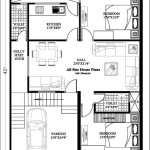Home Emergency Action Plan: A Comprehensive Example
Developing a robust Home Emergency Action Plan (HEAP) is paramount for ensuring the safety and well-being of household members during unforeseen crises. Natural disasters, fires, medical emergencies, and other unexpected events can occur without warning, underscoring the importance of proactive preparedness. A well-defined HEAP acts as a roadmap, guiding inhabitants through critical steps to mitigate risks, protect property, and ultimately, save lives. The following example provides a comprehensive framework for constructing an effective plan tailored to individual household needs and potential local hazards.
The effectiveness of any HEAP hinges on its clarity, accessibility, and regular practice. The plan should be written in simple, easily understood language, avoiding technical jargon. Multiple copies should be printed and stored in readily accessible locations throughout the house. Furthermore, regular drills and reviews are crucial to familiarize all household members with the plan's components and ensure its continued relevance.
Key Element 1: Hazard Assessment and Risk Mitigation
The cornerstone of a strong HEAP is a thorough assessment of potential hazards specific to the geographic location and the property itself. This assessment should consider both natural and man-made threats. Natural disasters may include earthquakes, floods, hurricanes, tornadoes, wildfires, and severe weather events. Man-made threats can encompass potential fires, gas leaks, hazardous material spills, and security breaches. This assessment must be specific. For example, stating “earthquake” is insufficient; the assessment should include the potential for landslides if the property is located on a slope prone to them. Similarly, for fires, considerations should include the proximity to brush and dry vegetation and the presence of flammable materials within the home.
Once potential hazards have been identified, the next step is to implement risk mitigation strategies to reduce the likelihood and impact of these events. This may involve structural improvements to the property, such as reinforcing foundations for earthquake resistance or installing flood barriers. It also includes implementing safety measures, such as installing smoke detectors and carbon monoxide detectors, maintaining fire extinguishers, and securing loose objects that could become projectiles during a high-wind event. Regular maintenance of the home's systems, such as electrical wiring and plumbing, is also critical to prevent accidents.
Furthermore, understanding local emergency response protocols and evacuation routes is essential. Familiarize household members with the location of emergency shelters and contact information for local authorities. Subscribe to local emergency alert systems to receive timely warnings and instructions during a crisis. It's also advisable to identify and establish relationships with neighbors who can provide assistance during an emergency.
Key Element 2: Communication Plan and Emergency Contacts
Effective communication is vital during an emergency. A well-defined communication plan ensures that household members can stay connected, receive updates, and coordinate actions. The first step is to establish a designated out-of-state contact person. This individual should reside outside of the immediate geographic area and serve as a central point of contact for family members who may be separated during an emergency. All household members should memorize this person's phone number and email address.
Develop a communication strategy that accounts for potential disruptions to phone and internet services. Consider utilizing alternative communication methods, such as two-way radios or satellite phones, especially in areas prone to natural disasters. Establish pre-determined meeting points, both near the home and in a more distant location, in case family members are unable to return to the house. These meeting points should be easily accessible and recognizable.
Create a comprehensive list of emergency contact numbers, including local authorities, hospitals, doctors, insurance providers, and utility companies. Keep this list readily accessible in multiple locations, such as on the refrigerator, in emergency kits, and stored digitally on smartphones. Ensure that all household members know how to access and utilize this information.
Consider using a group messaging app or service to facilitate communication during an emergency. These platforms allow for mass dissemination of information and can be crucial for coordinating actions and providing updates to family members. Designate a person to be responsible for sending out emergency communications via these channels.
Key Element 3: Emergency Supply Kit and Evacuation Procedures
An adequately stocked emergency supply kit is indispensable for weathering an emergency situation. The kit should contain enough supplies to sustain household members for at least 72 hours, but ideally for a longer period depending on the potential duration of anticipated emergencies in the area. The specific contents of the kit will vary depending on individual needs and circumstances, but the following items should be included as a baseline:
-
Water:
At least one gallon of water per person per day for drinking and sanitation.-
Food:
Non-perishable food items such as canned goods, granola bars, dried fruits, and nuts.-
First Aid Kit:
A comprehensive first aid kit with essential supplies such as bandages, antiseptic wipes, pain relievers, and any necessary prescription medications.-
Flashlight and Extra Batteries:
A reliable flashlight and a supply of extra batteries.-
Radio:
A battery-powered or hand-crank radio to receive emergency broadcasts.-
Multi-tool:
A multi-tool with a knife, pliers, and other useful tools.-
Whistle:
A whistle to signal for help.-
Dust Mask:
A dust mask to protect against airborne particles.-
Moist Towelettes, Garbage Bags, and Plastic Ties:
For sanitation purposes.-
Wrench or Pliers:
To turn off utilities.-
Can Opener:
A manual can opener for canned goods.-
Local Maps:
Paper maps of the local area in case GPS navigation is unavailable.-
Cash:
Small denomination bills in case electronic payment systems are down.-
Copies of Important Documents:
Copies of identification, insurance policies, and other important documents stored in a waterproof container.-
Personal Hygiene Items:
Toothbrush, toothpaste, soap, and other personal hygiene items.-
Sleeping Bags or Blankets:
For warmth and comfort.In addition to the basic emergency supply kit, consider adding items specific to individual needs, such as medication, baby supplies, pet food, and assistive devices. Store the emergency supply kit in an easily accessible location, such as a closet near the front door or in the garage. Regularly check and replenish the kit to ensure that the supplies are fresh and in good condition.
Develop and practice evacuation procedures for various emergency scenarios. Identify primary and secondary escape routes from each room in the house. Designate a meeting point outside the home where family members should gather in case of an evacuation. Conduct regular fire drills to familiarize household members with the evacuation procedures and ensure that they can execute them quickly and efficiently. Special consideration should be given to household members with mobility limitations or other disabilities, ensuring that they have assistance during an evacuation.
If an evacuation is necessary, remember to turn off utilities, such as gas and electricity, if it is safe to do so. Secure the house by locking doors and windows. Take the emergency supply kit and any essential medications. Follow the designated evacuation route and proceed to the pre-determined meeting point. Do not return to the house until authorities have declared it safe to do so.
Furthermore, include specific instructions for different types of emergencies. For example, a fire evacuation plan will differ significantly from a flood evacuation plan. Ensure that everyone in the household understands the specific steps to take in each scenario. This might include knowing where the fire extinguishers are located and how to use them, or understanding how to shut off the water supply in case of a burst pipe. Specific protocols for dealing with intruders or other security threats should also be included.
Regularly review and update the HEAP to reflect changes in the household's circumstances, such as new family members joining the household, changes in medical conditions, or updates to local emergency response protocols. By taking the time to develop and maintain a comprehensive HEAP, households can significantly enhance their resilience and ability to cope with unexpected emergencies.

8 Home Evacuation Plan Templates Ms Word

8 Home Evacuation Plan Templates Ms Word

Evacuation Floor Plan Template Unique 12 Home Fire Ierde Emergency

Evacuation Plan How To Prepare Make A Examples

Writing A Family Emergency Plan

8 Home Evacuation Plan Templates Ms Word

Emergency Management Plan Template Luxury The Role Of Clinicians In Preparing Patients Preparedness Response

Evacuation Of The Home 35kb

Emergency Action Plan

Emergency Action Plan 26 Examples Format Google Docs Word Pages








